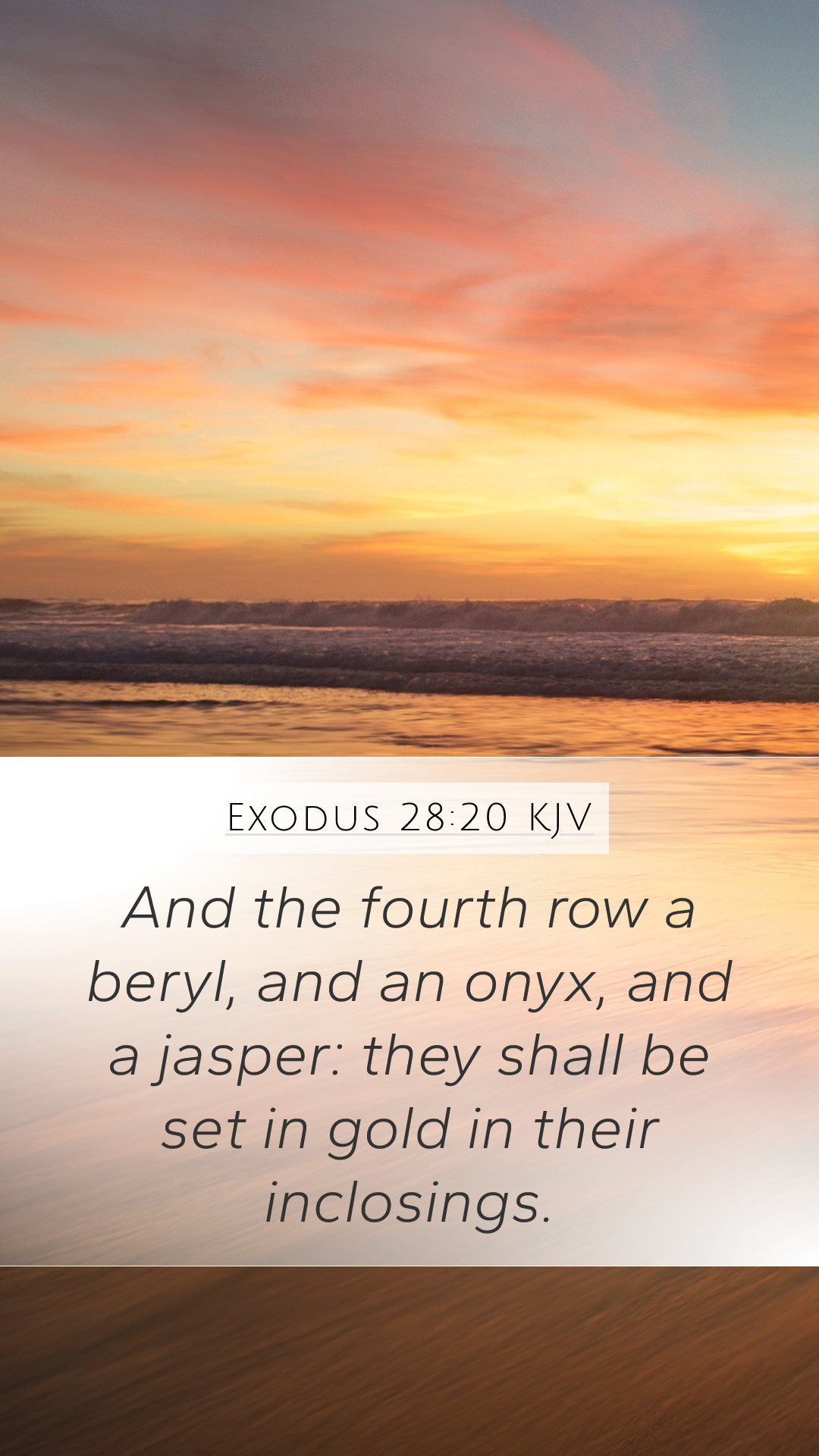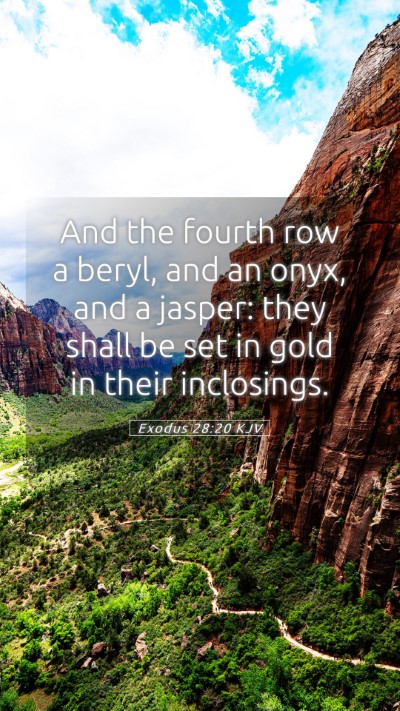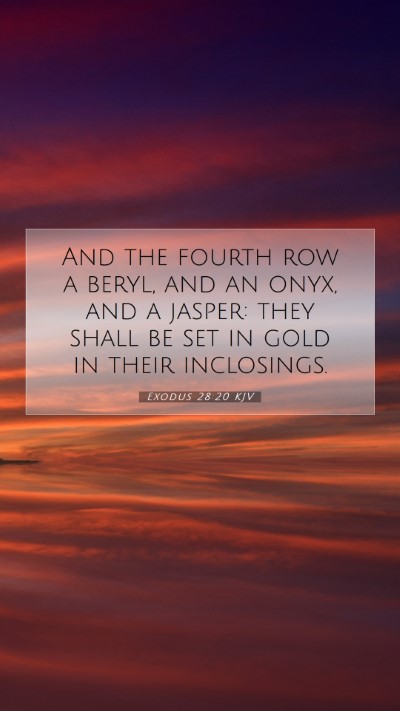Exodus 28:20 – Summary of Meaning and Interpretations
The Bible verse Exodus 28:20 is part of the instructions given by God regarding the garments of the priests in ancient Israel. This verse particularly deals with the details concerning the stones placed on the breastplate of the high priest.
Context and Background
In the broader context of Exodus 28, God outlines the clothing that the priests, especially the high priest Aaron, are to wear when performing their sacred duties. These garments are not merely functional; they are rich in symbolism, representing holiness, righteousness, and the covenant with God.
Verse Breakdown
Text of Exodus 28:20
“And the third row a jacinth, an agate, and an amethyst.”
Interpretations and Meanings
This verse communicates several important themes:
- Symbolism of the Stones: The gems listed in this verse—jacinth, agate, and amethyst—are often seen as symbolizing the twelve tribes of Israel. Each stone signifies a different tribe, emphasizing God's relationship with His people.
- Representation of Divine Will: The arrangement and choice of stones signify God's meticulous and intentional design for worship and service. The high priest's garments were designed to reflect purity and to allow the priest to carry the names of the tribes before God.
- Reminder of Responsibility: Wearing the breastplate with these stones reminds the high priest of his responsibilities and duties towards the people of Israel, emphasizing intercession and representation.
Commentary Insights
Commentaries from notable theologians provide additional depth to understanding this verse:
- Matthew Henry: Comments on the significance of the high priest bearing the names of Israel, suggesting that this act symbolizes their access to God through appointed mediators. The use of precious stones signifies the value God places on His people.
- Albert Barnes: Highlights the importance of the high priest's breastplate as a means of God's guidance, showcasing how God used signs and symbols to communicate with Israel. Each stone's color and luster reflect the beauty of holiness.
- Adam Clarke: Explains the individual characteristics of the stones used, delving into their meanings and historical significance. He emphasizes that these details serve to instruct future generations about the sanctity that must surround divine service.
Biblical Exegesis
Understanding Exodus 28:20 requires an exploration into both the historical context and the implications for contemporary readers:
- Historical Context: The priestly garments were vital during the tabernacle worship in ancient Israel, and understanding their construction helps illuminate the holiness associated with the service of God.
- Implications for Today: Believers may reflect on the principle of representing their community before God, embodying the values and traits that align with His will, much like the high priest did.
Application of the Verse
In contemplating the application of Exodus 28:20, several aspects can be considered:
- Role of Intercession: Just as the high priest interceded for the people, believers are called to pray for one another and intercede in their communities.
- Covenantal Relationship: The verse invites reflection on one's commitment to God, emphasizing the importance of upholding the teachings and values that signify a relationship with Him.
- Beauty of Holiness: As the stones represented beauty and value, individuals are encouraged to live lives that reflect the beauty of God’s character in their daily actions.
Cross References
This verse is related to several other passages in the Bible that provide additional insights:
- Exodus 28:17-21 – Description of the breastplate and significance of the stones.
- 1 Peter 2:9 – Believers as a chosen people, a royal priesthood.
- Revelation 21:19-20 – The foundation stones of the New Jerusalem, reflecting gem symbolism.
Conclusion
Exodus 28:20 illustrates the importance of symbolic representation in worship and the meticulous nature of God's design in biblical matters. Understanding this verse leads to deeper reflections on one's relationship with God and responsibilities within the community of faith.


